Yamaguchi Prefecture | Where the Sea and History Converge at the Western Edge of Honshu

Yamaguchi Prefecture | Where the Sea and History Converge at the Western Edge of Honshu
Located at the westernmost tip of Honshu, Yamaguchi Prefecture faces both the Sea of Japan and the Seto Inland Sea, offering a landscape shaped by diverse nature and a rich historical legacy.
The prefecture is home to many historically significant sites. In particular, the city of Hagi is known for producing numerous influential figures who played key roles in the Meiji Restoration. The preserved samurai districts and World Heritage sites—part of the “Sites of Japan’s Meiji Industrial Revolution”—allow visitors to experience Japan’s modern history firsthand.
Shimonoseki, overlooking the Kanmon Strait, has long flourished as a vital maritime hub and maintains strong connections with neighboring Kyushu. The city is renowned for its pufferfish (fugu) cuisine and the bustling atmosphere of Karato Market.
Yamaguchi also boasts stunning natural scenery, including the iconic Tsunoshima Bridge and Motonosumi Shrine. As a region that blends features of both the San’in and San’yō areas, it offers a uniquely multifaceted experience.
With its wealth of historical landmarks, natural beauty, and culinary culture, Yamaguchi Prefecture serves as a compelling destination for tourism, education, and cultural exchange.
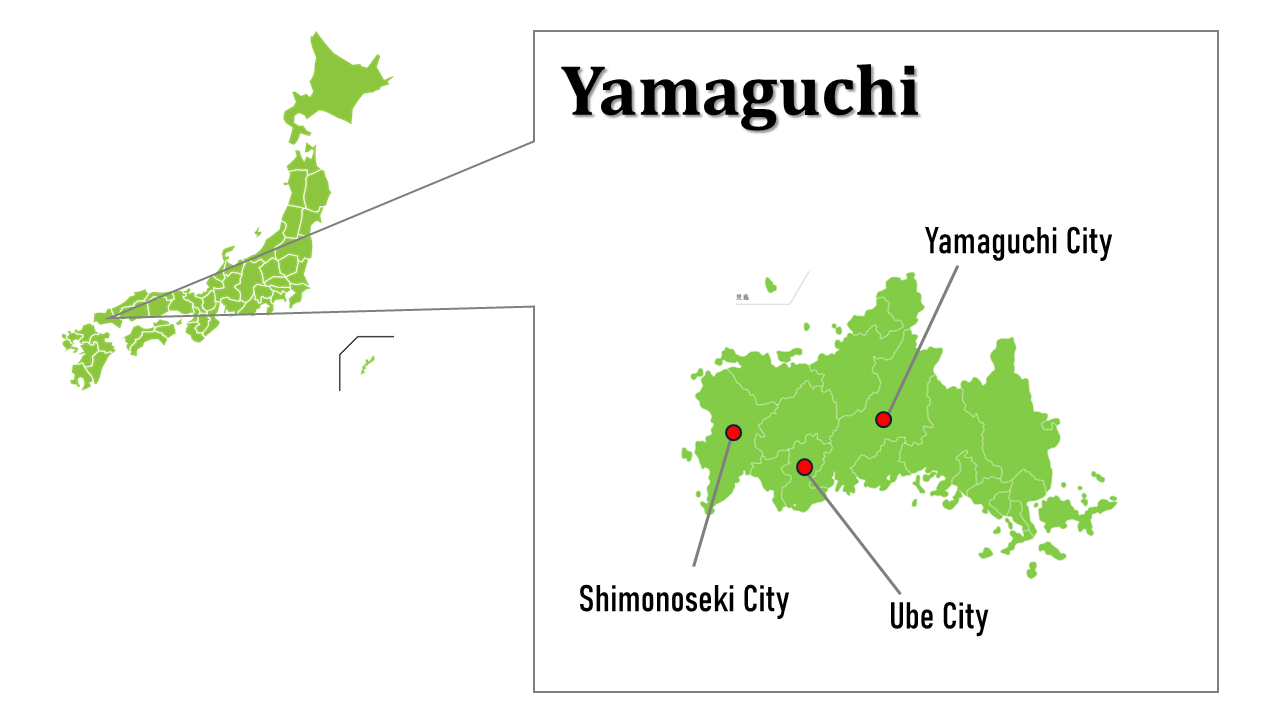
- Yamaguchi City
- Yamaguchi city
- Shimonoseki city
- Ube city
- Approximately 1.3 million
- Akiyoshido Cave
- Kintaikyo Bridge
- Tsunoshima Bridge
- Motonosumi Inari Shrine
- Fugu (Pufferfish)
- Kawara Soba — A regional dish from Yamaguchi where green tea soba noodles and toppings are served on a heated roof tile.
- Hagi Yaki
- Ouchi-nuri lacquerware
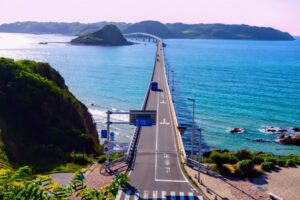
Tsunoshima Bridge in Shimonoseki City, Yamaguchi Prefecture, is a 1,780-meter-long scenic bridge spanning emerald-blue waters.
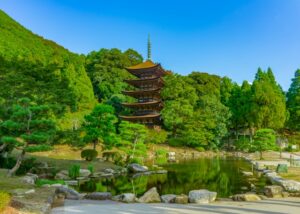
The five-story pagoda of Rurikoji Temple in Yamaguchi City, Yamaguchi Prefecture, is a National Treasure built in the Muromachi period and is regarded as one of Japan’s Three Great Pagodas.
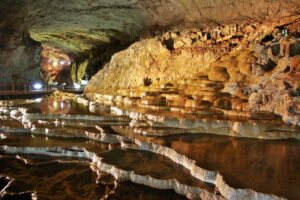
Stretching for about 10 kilometers beneath the Akiyoshidai plateau, Akiyoshido is one of Japan’s largest limestone caves, captivating visitors with its otherworldly underground scenery.
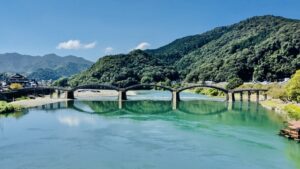
Kintai Bridge in Iwakuni City, Yamaguchi Prefecture, is a wooden bridge with five iconic arches and is considered one of Japan’s Three Famous Bridges.
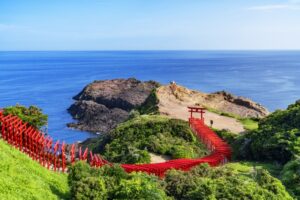
Motonosumi Shrine in Nagato City, Yamaguchi Prefecture, is a seaside shrine famous for its 123 vermilion torii gates stretching along a dramatic cliffside.
